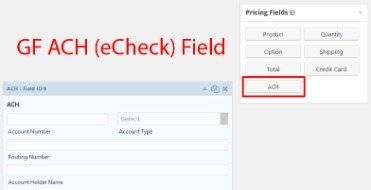Other reconciliations turn non-GAAP measures, such as earnings before interest, taxes, depreciation, and amortization (EBITDA), into their GAAP-approved counterparts. Cash flow can be calculated through either a direct method or indirect method. GAAP requires that if the direct method is used, the company must still reconcile cash flows to the income statement and balance sheet. Vendor reconciliations compare the balance owed on supplier provided statements to transactions within the payable ledger and its overall balance. Reconciling accounts can be done manually, but it uses up a lot of time and requires specialized knowledge.
- Prepaids are recognized gradually as an expense, using a monthly allocation with a journal entry to reduce the prepaid asset balance and record the expense on the income statement.
- When the company pays the bill, it debits accounts payable and credits the cash account.
- Financial institutions are less likely to be forgiving for missed payments or approved overdraft values being exceeded.
- This means that the business can conduct the relevant reconciliation based on its needs and type of business.
The accountant contacted the bank to get information on the mysterious transaction. Using a schedule of general ledger accounts, analyze capital accounts by transaction for any additions or subtractions. The spreadsheet should include beginning balance, additions, subtractions, and any adjustments required for recording to agree with the general ledger ending balances for capital accounts. Make any required adjusting journal entries for general ledger balances to correctly reflect short-term and long-term notes payable components.
Why you should reconcile your accounts
It involves calling up the account detail in the statements and reviewing the appropriateness of each transaction. The documentation method determines if the amount captured in the account matches the actual amount spent by the company. Common account reconciliation differences are timing differences in recording to the general ledger, outstanding and missing transactions, and transaction errors. The company should ensure that any money coming into the company is recorded in both the cash register and bank statement.
In contrast, a consulting firm may find that monthly reconciliations for invoices and expenses are enough. Meanwhile, a construction company dealing with equipment and material costs may choose quarterly reconciliations to guarantee their financial processes operate smoothly. After finding evidence for all differences between the bank statement and the cash book, the balances in both records should be equal. You should prepare a bank reconciliation statement that explains the difference between the company’s internal records and the bank account.
Consequences of Not Reconciling Your Bank Statement
Usually, the bigger the company, the more frequently you need to reconcile the books with your bank statement – monthly, weekly, or even daily. Smaller businesses can go with the reconciliation process every month or even every six months. Legal software for trust accounting can help you track transactions and reconcile records and bank statements.
That’s how we know the financials are accurate — or at least materially correct — every month. So, it’s time to fully embrace account reconciliation in your business operations. With this guide in your toolkit, you’re well-equipped to navigate this process. The process of account reconciliation is all about creating a more robust and reliable financial foundation for your business. During the reconciliation process, corrections may be made to the general ledger with adjusting journal entries.
When is Account Reconciliation Done?
Here is a simple process you can follow to make sure your accounts are reconciled every month. The analytics review approach can also reveal fraudulent activity or balance sheet errors. In this case, businesses estimate the amount that should be in the accounts based on previous account activity levels. Also, transactions appearing in the bank statement but missing in the cash book should be noted. Some of the transactions affected may include ATM service charges, check printing fees.
Next, match the entries in the general ledger with transactions on the statement. Adding to the challenge, sometimes an entry in the general ledger may correspond certified public accountant vs enrolled agent salary to two or more entries in a bank statement, or vice versa. Later that day, you get an urgent text from your bank that your account is overdrawn by $5,000.
What are the different types of reconciliation?
For instance, ecommerce businesses may struggle with accounting processes due to a large number of the sales channels they use. As you can see, the reconciliation report serves as a record of the reconciliation activities and provides an overview of the accuracy and integrity of the financial data. It’s crucial for internal control, financial analysis, and auditing purposes.
Keeping your accounts reconciled is the best way to make sure that your balances are accurate and an important part of ensuring adequate financial controls are in place. While reconciling your bank statement, you notice the bank debited your account twice for $2,000 in error. Let’s say you’ve been drooling over the latest model widget polisher for your business.
After scrutinizing the account, the accountant detects an accounting error that omitted a zero when recording entries. Rectifying the error brings the current revenue to $90 million, which is relatively close to the projection. The rules vary depending on whether the thief used just your account number or your physical ATM or debit card.
Reconciliation in accounting—the process of comparing sets of records to check that they’re correct and in agreement—is essential for ensuring the accuracy of financial records for all kinds of businesses. For the legal profession, however, regular, effective reconciliation in accounting is key to maintaining both financial accuracy and legal compliance—especially when managing trust accounts. This saves your company from paying overdraft fees, keeps transactions error-free, and helps catch improper spending and issues such as embezzlement before they get out of control. Account reconciliation is necessary for asset, liability, and equity accounts since their balances are carried forward every year.
Invoice reconciliation usually involves two-way matching or three-way matching, which compares invoice details against a purchase order and shipping receipt. As CEO and Co-Founder, Mike leads FloQast’s corporate vision, strategy and execution. Prior to founding FloQast, he managed the accounting team at Cornerstone OnDemand, a SaaS company in Los Angeles.


